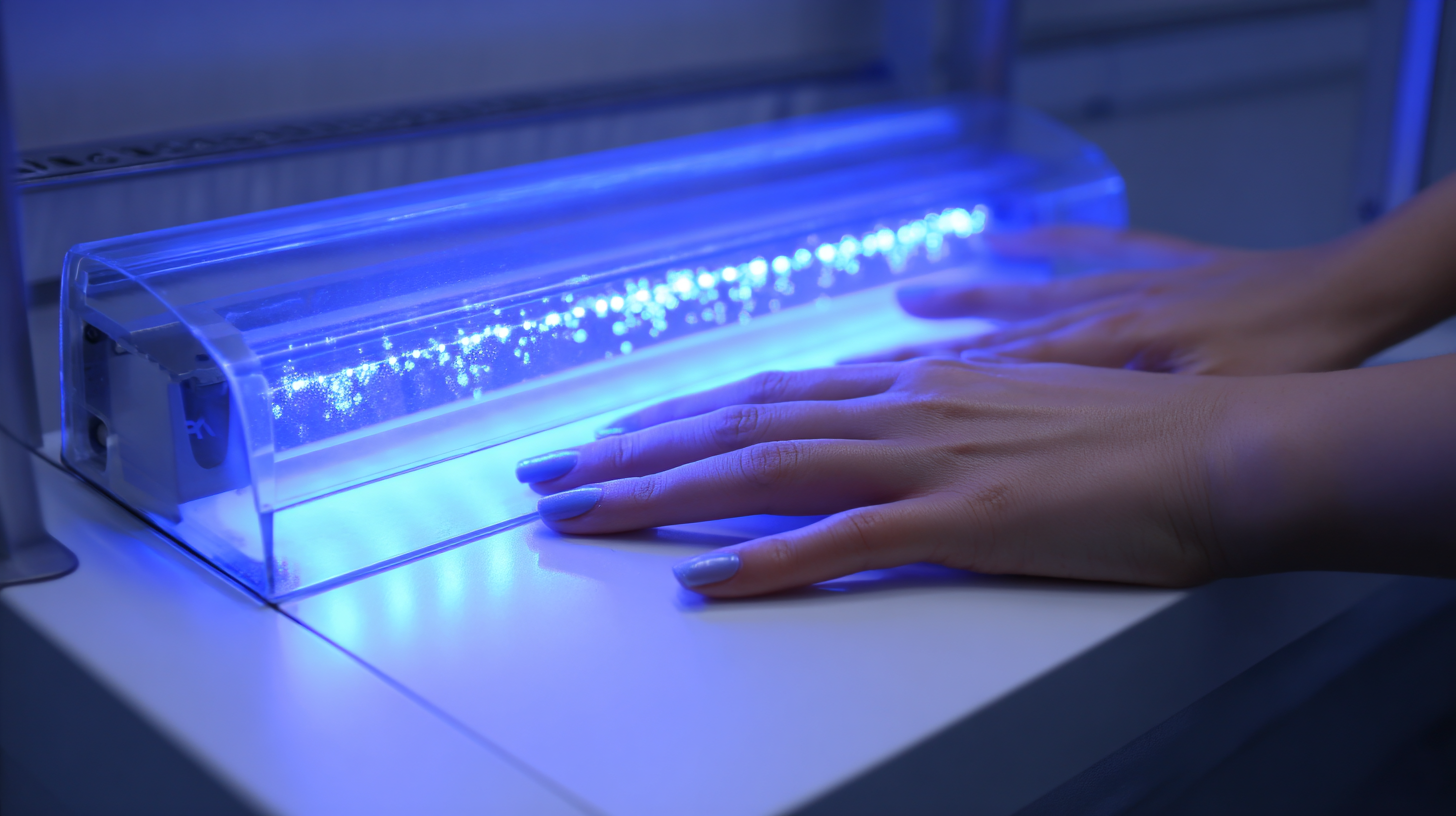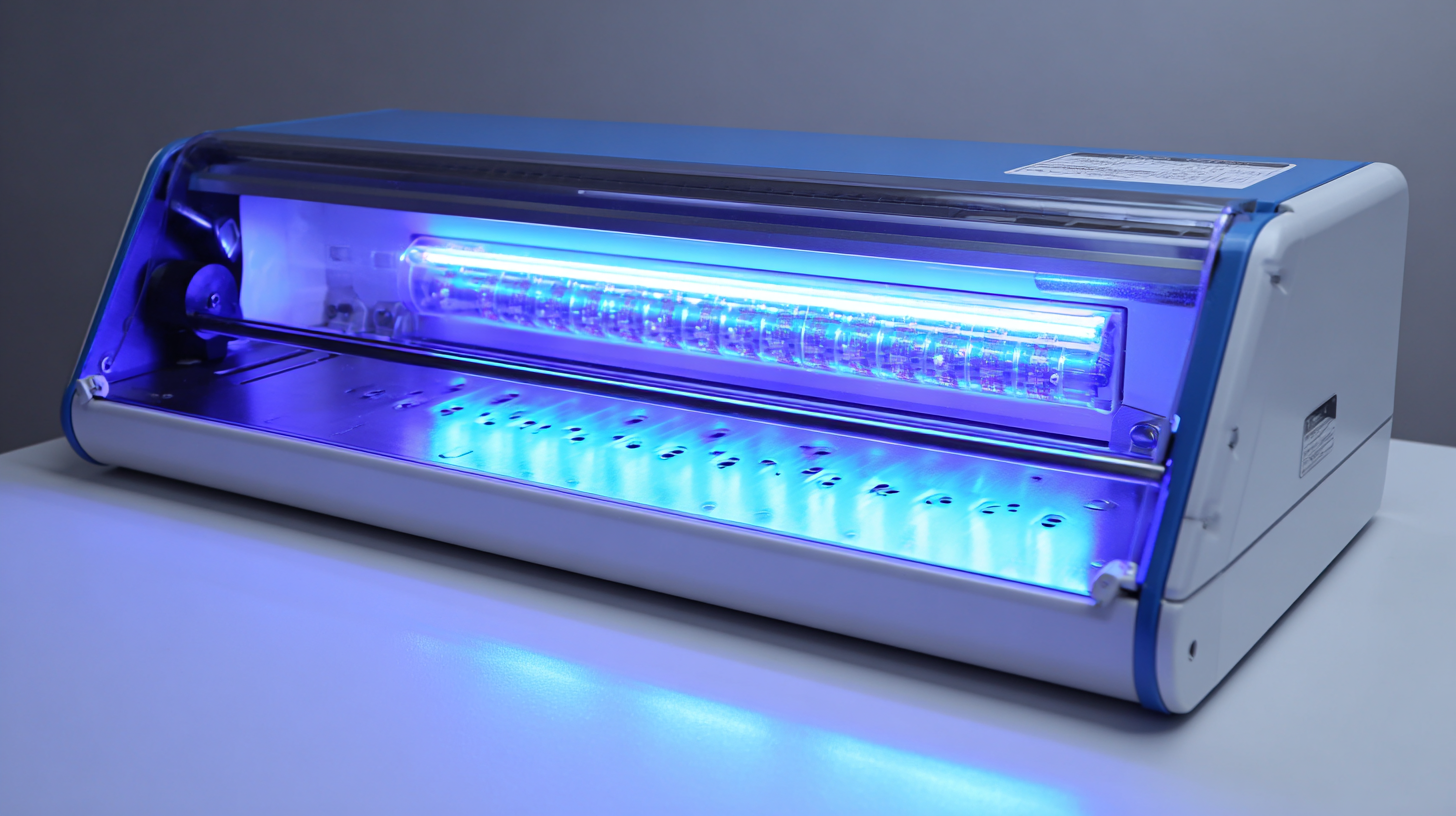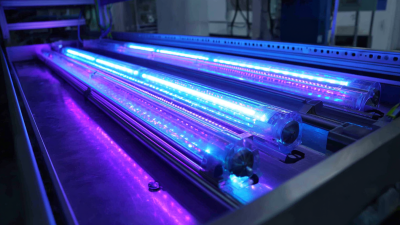Leave Your Message
-
Phone
-
E-mail
-
Whatsapp
 In recent years, the nail art industry has witnessed a remarkable transformation driven by technological advancements, particularly with the introduction of UV LED curing lamps. According to a report from Market Research Future, the global UV LED market is poised to reach approximately $1 billion by 2025, which reflects a growing demand for efficient and effective curing solutions in nail salons.
In recent years, the nail art industry has witnessed a remarkable transformation driven by technological advancements, particularly with the introduction of UV LED curing lamps. According to a report from Market Research Future, the global UV LED market is poised to reach approximately $1 billion by 2025, which reflects a growing demand for efficient and effective curing solutions in nail salons.
UV LED curing lamps, known for their rapid curing capabilities and energy efficiency, have revolutionized the way nail technicians work, significantly reducing client wait times while enhancing the durability and finish of nail art. This innovation not only caters to the aesthetic desires of consumers but also promotes safer practices by minimizing exposure to harmful chemicals often associated with traditional curing methods.
As the nail art industry continues to evolve, understanding the science behind UV LED curing lamps is crucial for both professionals and enthusiasts seeking to unlock the full potential of nail design.
The evolution of nail art reflects a rich tapestry of cultural and technological advancements throughout history. Starting from ancient Egypt, where henna and intricate designs symbolized beauty and status, nail art has transformed dramatically over centuries. Various civilizations adopted their unique styles, employing natural dyes and intricate techniques, showcasing nails as a form of self-expression. This cultural significance laid the foundation for the modern nail art movement, which flourished with the rise of personal grooming and fashion trends in the 20th century.
In the present day, nail art technology continues to innovate, merging art with cutting-edge science. The introduction of UV LED curing lamps has revolutionized the industry, enabling lasting designs that are both vibrant and durable. These advancements not only enhance the aesthetic possibilities but also cater to the growing demand for efficiency in nail care. As the nail industry looks towards the future, the fusion of artistry and technology promises to elevate nail art, making it an ever-evolving canvas that reflects contemporary culture while honoring its historical roots.

 The molecular mechanism behind UV LED curing lamps centers on photoinitiators, which are special compounds that absorb UV light and trigger chemical reactions. When a nail polish or gel is exposed to the UV LED light, the curing process begins as these photoinitiators are activated. This activation results in a rapid polymerization reaction, wherein liquid monomers convert into solid polymers, creating a durable and glossy finish on the nails.
The molecular mechanism behind UV LED curing lamps centers on photoinitiators, which are special compounds that absorb UV light and trigger chemical reactions. When a nail polish or gel is exposed to the UV LED light, the curing process begins as these photoinitiators are activated. This activation results in a rapid polymerization reaction, wherein liquid monomers convert into solid polymers, creating a durable and glossy finish on the nails.
At the molecular level, this process involves the formation of new chemical bonds between the monomers, significantly strengthening the structure of the nail product. The specific wavelengths emitted by the UV LED lamps are crucial, as they are designed to match the absorption spectrum of the photoinitiators used in nail products. This precision ensures optimal curing efficiency, leading to quicker drying times and enhanced durability of nail art. Through understanding these molecular interactions, nail technicians can achieve flawless finishes with superior resilience, revolutionizing the way nail art is applied and maintained.
UV LED curing lamps have revolutionized the nail art industry by providing efficient and effective curing solutions. One significant advantage of these lamps is their speed; they can cure gel polishes in just 30 seconds to a couple of minutes, depending on the formula. This rapid curing process not only enhances the overall customer experience by reducing wait times but also allows nail technicians to complete more services in a shorter period, ultimately increasing business productivity.
Additionally, UV LED lamps are known for their energy efficiency and longer lifespan compared to traditional UV lamps. They consume less power, which not only benefits the environment but also leads to cost savings for salon owners. Moreover, these lamps emit less heat, reducing the risk of discomfort for clients during the curing process. The specific wavelengths of light emitted by UV LED lamps also promote a more uniform curing of products, resulting in a flawless finish and greater durability of nail art designs. This scientific advancement in nail technology presents numerous benefits that make UV LED lamps an essential tool for modern nail artists.
| Feature | UV LED Lamp | Traditional UV Lamp |
|---|---|---|
| Curing Time | 30-60 seconds | 2-3 minutes |
| Energy Consumption | Low | High |
| Heat Emission | Minimized | High |
| Lifespan | 30,000 hours | 1,000 hours |
| Weight | Lightweight | Heavy |
| Safety | Lower UV exposure | Higher UV exposure |
| Cost | Mid-range | Affordable |
The growing popularity of UV LED curing lamps in nail art has sparked numerous discussions regarding safety and potential risks associated with UV exposure. Many people harbor misconceptions about these devices, believing they pose significant health hazards. In reality, the UV radiation emitted by these lamps is generally minimal and not nearly as harmful as that from prolonged sun exposure. Professional salons often prioritize safety by ensuring that their UV lamps are properly calibrated, minimizing the risk of skin damage.
It's also important to distinguish between the different types of UV radiation. UV-A rays, which are primarily used in nail curing, are less harmful than UV-B rays that can lead to skin cancer. Studies indicate that the exposure from a few minutes under a UV lamp is comparable to the exposure from several hours of sunbathing.
To further alleviate concerns, consumers can take preventive measures such as applying sunscreen on the hands before treatments or using UV-protective gloves. With these considerations in mind, one can enjoy the artistic possibilities of nail art without unnecessary fear regarding UV exposure.
As the nail art industry continues to evolve, the future promises exciting innovations that will enhance both the application process and the creativity involved.
One notable trend is the integration of smart technology into nail art techniques. For instance, the development of app-controlled UV LED curing lamps allows for personalized settings tailored to individual preferences, ensuring optimal curing times and results. This technological shift not only improves efficiency but also offers nail artists greater control over their work, leading to more intricate and durable designs.
Another emerging trend is the use of eco-friendly materials in nail art. As consumers become more environmentally conscious, brands are responding by creating polishes and gels that are free from harmful chemicals. Innovations in biodegradable formulas and sustainable packaging are set to redefine the industry standards, appealing to a growing demographic of eco-aware clientele.
Furthermore, advancements in 3D printing technology are paving the way for custom nail designs, making it possible to create unique textures and patterns that were once unimaginable.
This convergence of technology and artistry is set to unlock new creative possibilities, making nail art more accessible and innovative than ever before.






